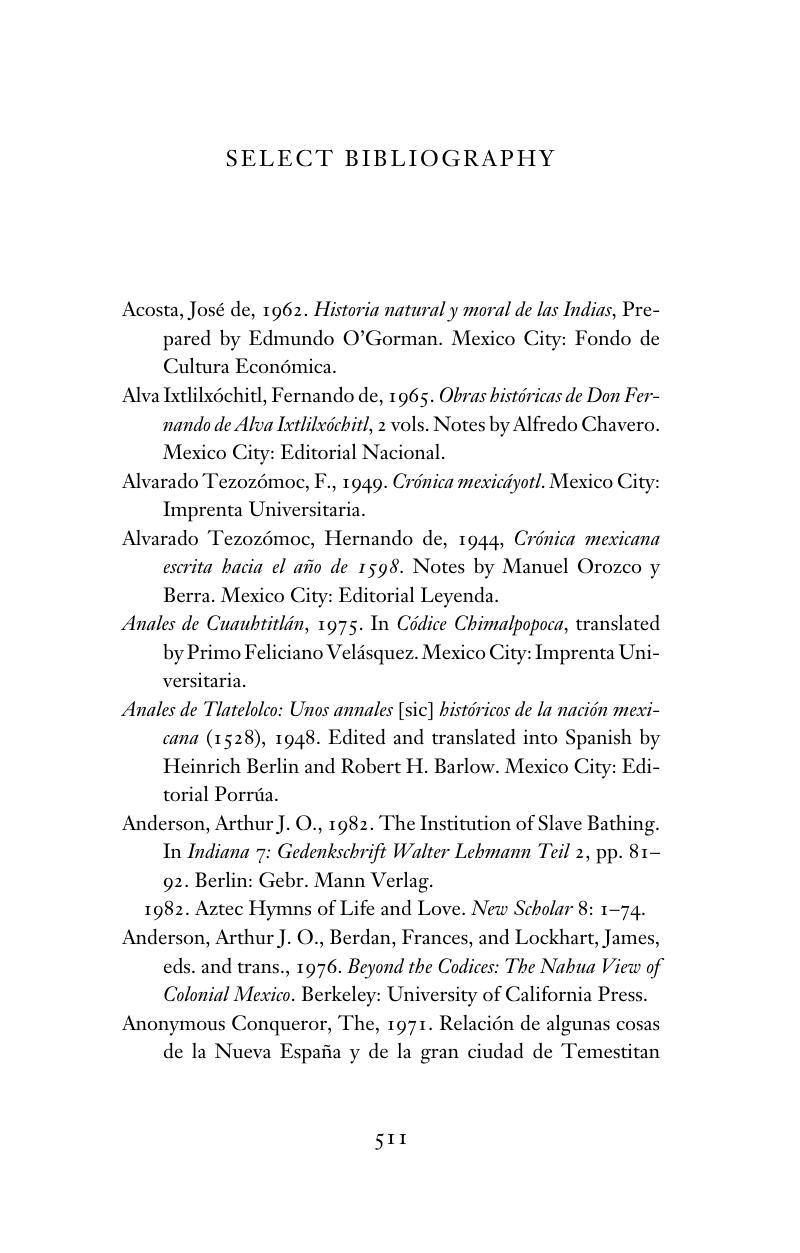Book contents
- Frontmatter
- Dedication
- Contents
- List of illustrations
- Acknowledgements
- Acknowledgements for Literary Material and Illustrations
- Note on Nahuatl
- Maps
- Epigraph
- Introduction
- Part I The City
- Part II Roles
- Part III The Sacred
- Part IV The City Destroyed
- A Question of Sources
- Monthly Ceremonies of theSeasonal (Solar) Calendar: Xiuitl
- The Mexica Pantheon
- Notes
- Select Bibliography
- Index
- Artefacts
- References
Select Bibliography
Published online by Cambridge University Press: 05 June 2014
- Frontmatter
- Dedication
- Contents
- List of illustrations
- Acknowledgements
- Acknowledgements for Literary Material and Illustrations
- Note on Nahuatl
- Maps
- Epigraph
- Introduction
- Part I The City
- Part II Roles
- Part III The Sacred
- Part IV The City Destroyed
- A Question of Sources
- Monthly Ceremonies of theSeasonal (Solar) Calendar: Xiuitl
- The Mexica Pantheon
- Notes
- Select Bibliography
- Index
- Artefacts
- References
Summary

- Type
- Chapter
- Information
- AztecsAn Interpretation, pp. 511 - 544Publisher: Cambridge University PressPrint publication year: 2014



